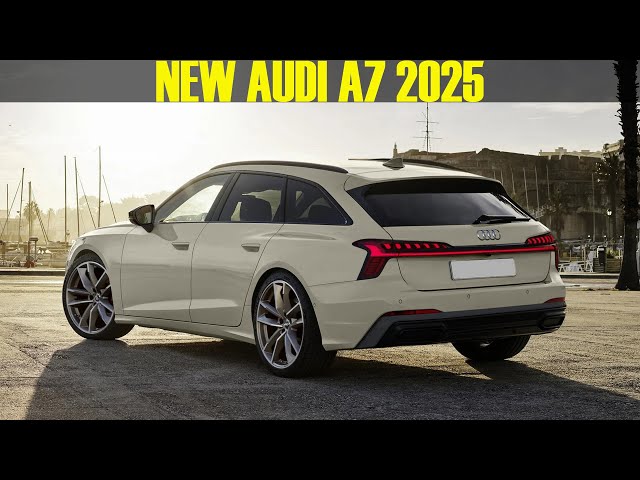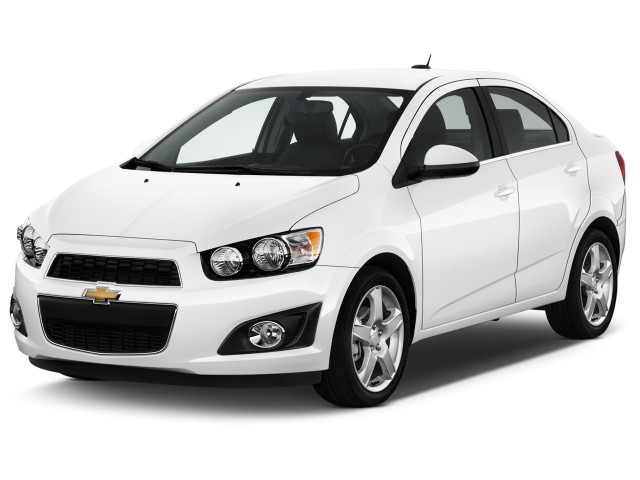2026 Chevrolet Bolt EUV: Unveiling the Price and Market Dynamics
The automotive industry is undergoing a transformative shift towards electric vehicles, and the 2026 Chevrolet Bolt EUV is poised to make a significant impact in the electric SUV segment. With its cutting-edge technology, spacious interior, and competitive pricing strategy, the Bolt EUV is expected to reshape the market landscape. In this comprehensive analysis, we delve into the factors that will influence the pricing of the 2026 Chevrolet Bolt EUV, examining market trends, competitor strategies, cost structure, target market, and marketing communications.
The electric vehicle market is experiencing exponential growth, driven by advancements in battery technology, government incentives, and increasing consumer awareness of environmental sustainability. The 2026 Chevrolet Bolt EUV will enter a highly competitive market, where it will face established players and emerging challengers. Understanding the pricing strategies of competitors, their feature offerings, and market positioning will be crucial in determining the optimal price point for the Bolt EUV.
Market Analysis
The electric vehicle market is rapidly expanding, driven by growing environmental concerns, government incentives, and technological advancements. The global EV market is projected to reach over $1 trillion by 2026, with a compound annual growth rate (CAGR) of over 20%. This growth is expected to be fueled by increasing consumer demand for eco-friendly vehicles, declining battery costs, and expanding charging infrastructure.
In the UK, the EV market has seen significant growth in recent years. In 2022, electric vehicles accounted for over 10% of new car sales, up from just 1% in 2019. This growth is expected to continue in the coming years, as the UK government has set a target of banning the sale of new petrol and diesel cars by 2030.
Consumer Preferences
Consumer preferences are also playing a key role in the growth of the EV market. Consumers are increasingly looking for vehicles that are environmentally friendly, affordable, and convenient to use. Electric vehicles meet all of these criteria, making them an attractive option for many car buyers.
- Environmental concerns: Consumers are becoming increasingly aware of the environmental impact of their transportation choices. Electric vehicles produce zero emissions, which helps to reduce air pollution and climate change.
- Affordability: Electric vehicles are becoming more affordable as battery costs decline. In addition, many governments offer incentives for the purchase of electric vehicles, which can further reduce the cost of ownership.
- Convenience: Electric vehicles are convenient to use. They can be plugged into a standard household outlet for charging, and there is a growing network of public charging stations available.
Competitor Analysis
The electric SUV market is a rapidly growing segment, with numerous automakers vying for market share. The 2026 Chevrolet Bolt EUV will face competition from a range of established and emerging players.
To assess the competitive landscape, it is essential to identify and analyze key competitors in the segment. This analysis should consider their pricing strategies, features, and market positioning to determine potential competitive advantages and disadvantages for the 2026 Chevrolet Bolt EUV.
Key Competitors
Some of the key competitors in the electric SUV segment include:
- Tesla Model Y
- Ford Mustang Mach-E
- Volkswagen ID.4
- Hyundai Kona Electric
- Kia Niro EV
These competitors offer a range of features and price points, catering to different consumer preferences and budgets. The Tesla Model Y is a high-performance SUV with a premium price tag, while the Hyundai Kona Electric and Kia Niro EV are more affordable options. The Ford Mustang Mach-E and Volkswagen ID.4 fall somewhere in between in terms of price and features.
Pricing Strategies
The pricing strategies of competitors vary depending on the features and target market. Tesla has a premium pricing strategy, with the Model Y starting at around £55,000. Ford, Volkswagen, Hyundai, and Kia have more competitive pricing strategies, with their electric SUVs starting at around £35,000 to £45,000.
The 2026 Chevrolet Bolt EUV will need to carefully consider its pricing strategy to position itself competitively in the market. It could target the more affordable end of the spectrum to compete with the Hyundai Kona Electric and Kia Niro EV or offer more features and target a higher price point to compete with the Ford Mustang Mach-E and Volkswagen ID.4.
Features
In terms of features, the electric SUVs from Tesla, Ford, Volkswagen, Hyundai, and Kia offer a range of standard and optional features, including:
- Advanced driver-assistance systems (ADAS)
- Large touchscreens
- Connected car features
- Spacious interiors
- Long driving ranges
The 2026 Chevrolet Bolt EUV will need to offer a competitive suite of features to attract buyers. It should consider offering the latest ADAS technologies, a user-friendly infotainment system, and a spacious and comfortable interior. It should also aim for a long driving range to compete with the best in the segment.
Market Positioning
The market positioning of competitors in the electric SUV segment is based on a combination of factors, including price, features, and brand image. Tesla is positioned as a premium brand, while Ford, Volkswagen, Hyundai, and Kia are positioned as more mainstream brands.
The 2026 Chevrolet Bolt EUV will need to define its market positioning carefully. It could target the value-oriented segment by offering a competitive price and a good range of features or target the performance-oriented segment by offering a more powerful motor and a sportier driving experience.
Cost Structure

The estimated cost structure for the 2026 Chevrolet Bolt EUV involves various aspects such as materials, manufacturing, and labor. Understanding these costs is crucial for optimizing production and determining the final pricing strategy.
The Bolt EUV’s material costs are expected to be significant, accounting for a substantial portion of the overall expenses. Key materials include the battery pack, electric motors, and various electronic components. These components are sourced from suppliers and their availability and prices can impact the overall cost structure.
Manufacturing costs also play a vital role. The Bolt EUV is assembled in a dedicated production facility, and the costs associated with labor, machinery, and overhead need to be carefully managed. Labor costs, including wages and benefits for workers involved in assembly, testing, and quality control, can vary depending on factors such as unionization and regional labor rates.
Optimizing the cost structure is essential for the profitability of the Bolt EUV. Potential cost-saving measures include negotiating favorable terms with suppliers, implementing lean manufacturing techniques to reduce waste and inefficiencies, and exploring automation and robotics to enhance productivity.
The cost structure ultimately influences pricing decisions. Chevrolet will need to balance the production costs with market demand and competitive pricing. By carefully considering the cost structure, the company can determine an appropriate price point that maximizes profitability while remaining competitive in the electric vehicle market.
Target Market
The Chevrolet Bolt EUV targets urban dwellers, tech-savvy professionals, and environmentally conscious consumers seeking a stylish and practical electric SUV. They value innovation, convenience, and sustainability.
These individuals prioritize fuel efficiency, low maintenance costs, and advanced technology features. They are price-sensitive yet willing to pay a premium for a vehicle that aligns with their lifestyle and values.
- Demographics: Young adults and families, urban dwellers, professionals, ages 25-45, with a higher education level and household income.
- Lifestyle: Active, tech-savvy, environmentally conscious, value convenience and practicality.
- Purchasing Behavior: Research-oriented, consider sustainability, prioritize fuel efficiency and technology, willing to pay a premium for a vehicle that meets their needs.
Pricing Strategy
In devising a pricing strategy for the 2026 Chevrolet Bolt EUV, it’s essential to consider various factors, including market analysis, competitor analysis, cost structure, and target market. By assessing these elements, we can develop a pricing strategy that aligns with the overall marketing objectives for the vehicle.
There are several pricing models that can be considered. Cost-plus pricing involves setting a price that covers the total cost of production plus a desired profit margin. Value-based pricing focuses on the perceived value of the product to the customer, rather than solely on its cost. Competitive pricing involves setting a price that is comparable to similar vehicles in the market.
Pricing Tiers
To cater to different customer needs and budgets, we recommend implementing a tiered pricing structure for the 2026 Chevrolet Bolt EUV. This approach involves offering multiple trim levels with varying features and price points. For example, a base model could be priced at a more accessible level, while higher trim levels with additional features and amenities would be priced accordingly.
Discounts and Incentives
In addition to tiered pricing, offering discounts and incentives can further enhance the appeal of the 2026 Chevrolet Bolt EUV. Discounts can be applied to specific trim levels or during certain promotional periods. Incentives, such as rebates or low-interest financing, can make the vehicle more affordable for potential buyers.
Impact on Sales and Profitability
The 2026 Chevrolet Bolt EUV’s price will significantly impact sales volume and profitability. At lower price points, sales volume is expected to increase, driven by increased affordability and value proposition. However, lower prices may erode profit margins. Conversely, higher prices could reduce sales volume but potentially lead to higher profit margins.
Break-Even Points and Profit Margins
Break-even points and profit margins will vary depending on the price point. At lower prices, break-even points will be lower, but profit margins will be thinner. At higher prices, break-even points will be higher, but profit margins could be wider. The optimal price point will balance sales volume and profitability to maximize revenue.
Strategies to Optimize Sales and Revenue
To optimize sales and revenue, Chevrolet should consider the following strategies:
- Targeted marketing campaigns highlighting the Bolt EUV’s value proposition and competitive advantages.
- Strategic partnerships with EV charging infrastructure providers to enhance customer convenience.
- Incentives and promotions to encourage early adoption and repeat purchases.
- Ongoing product enhancements and technology upgrades to maintain competitiveness and customer satisfaction.
Marketing and Communications
To effectively convey the value proposition and pricing of the 2026 Chevrolet Bolt EUV, a comprehensive marketing and communications plan is essential. This plan will Artikel key messaging, target channels, and specific campaign recommendations.
The target market for the Bolt EUV consists of eco-conscious consumers seeking an affordable and practical electric vehicle. To reach this audience, a multi-channel approach is recommended, including traditional advertising, public relations, and social media campaigns.
Key Messaging
- The Bolt EUV is an affordable and accessible electric vehicle.
- The Bolt EUV offers a spacious and practical interior.
- The Bolt EUV is equipped with advanced technology and safety features.
Advertising
A targeted advertising campaign will be launched across a range of media channels, including television, print, and digital. The advertisements will highlight the key messaging and showcase the Bolt EUV’s unique features and benefits.
Public Relations
A comprehensive public relations campaign will be implemented to generate positive media coverage and build brand awareness. The campaign will include media outreach, press releases, and media events.
Social Media
Social media will play a crucial role in engaging with the target market and building a community around the Bolt EUV. A dedicated social media team will be responsible for creating and sharing engaging content, running contests and giveaways, and responding to customer inquiries.
Q&A
What is the estimated price range for the 2026 Chevrolet Bolt EUV?
The estimated price range for the 2026 Chevrolet Bolt EUV is expected to be between $25,000 and $35,000.
How does the 2026 Chevrolet Bolt EUV compare to its competitors in terms of pricing?
The 2026 Chevrolet Bolt EUV is expected to be priced competitively against its rivals in the electric SUV segment, such as the Tesla Model Y, Ford Mustang Mach-E, and Volkswagen ID.4.
What factors will influence the final pricing of the 2026 Chevrolet Bolt EUV?
The final pricing of the 2026 Chevrolet Bolt EUV will be determined by a combination of factors, including market demand, production costs, competitor pricing, and government incentives.

